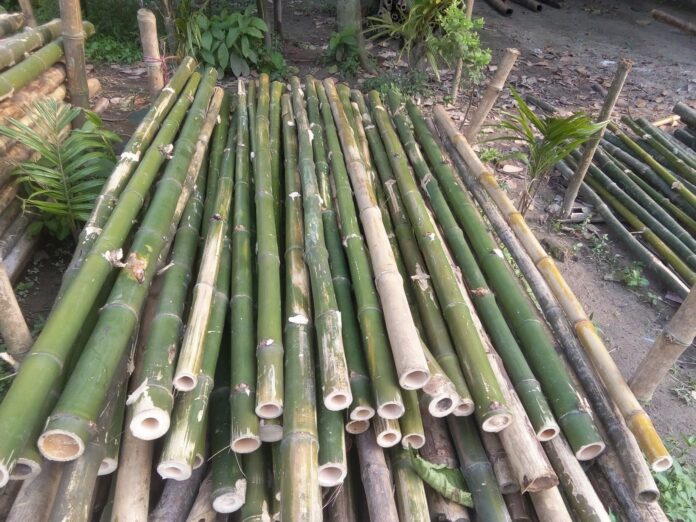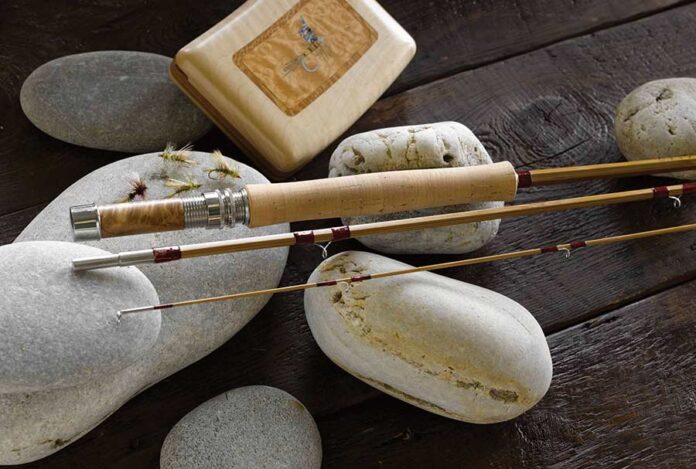There are many ways one can spend leisure time. Some like to sleep it off, while others are more into finding little adventures which would keep the adrenaline flowing. One such simple yet convenient adventure is fishing. Fishing has been around since time immemorial and now is a fully-scaled industry. However, many find comfort and pleasure in doing it the traditional way on a typical Sunday afternoon.
While there are many ways one can catch fish, be it using a net or with a poke stick, the commonly used and preferred method is with a fly rod. Fly fishing has been traced to the second (2nd) century in the Roman Empire. Ever since then, it has become a staple in the fishing industry. Fly rods are usually expensive, and some brands and variants could cost you an arm and a leg. Therefore, it is advised by many experienced fishermen that one should make their fly rod. There are many online Bamboo fly rod building classes where one can learn how to build one.
It might sound a bit easy to make your fly pole, but it is a delicate process with intricate steps and a lot of labour. Thus, this could easily become a tiring process for some. To ease out the steps the following article will discuss how you could make a perfect fly rod all by yourself using bamboo:
Picking The Right Bamboo

The first step to DIY your fishing line is to select a suitable bamboo stick. Bamboo is one of the strongest natural fibres on the planet, and cannot be broken down easily. Finding one straight bamboo shoot would not be difficult, as these are mostly not curved much. After you have gotten your hands on the desired soot that would ultimately form the finished product, it is now time to trim it down.
Split the bamboo into pieces as thick as a regular pencil. You would be left with multiple strips that would now be used to mould and turn into the finished rod.
Working On The Strips
Now that you have your bamboo strips ready, the next step in the process is to get them ready to be shaped into the final rod. First, the strips that are rectangular now need to be changed to triangular shards so that they can stick easily to one another and form the base of the pole. It is by stroking it in an angular fashion on a hand press. It is also the casting quality determination step and eliminates all useless strips.
Splitting and planning the bamboo is the most labour-intensive and time-consuming process in the entire DIY session. Now that you have six strips of equal size and length it is now time to apply glue and stick them together in the shape of the fishing line.
Sticking It All Together

Take six (6) triangular strips and apply glue to one side. The most commonly used glue is polyurethane-based, as it is waterproof and serves the purpose well. Now, very delicately roll the sticks together into a hexagonal tube. It should start to look like a long stick with six sides. To secure the sticks in their place, one could tie up strings on the outer side of the pole and let it rest until the adhesive dries.
After making sure that the adhesive is dried out completely and it is safe to move the stick, remove the strings that were tied to it earlier. Scrape off the surface to remove any remnants of glue that might have leaked out of the strips. You are now left with a rough model of what the fly line would look like.
Flattening The Pole Stick
Next in line is to make sure that the rod is completely straight. If the pole stick is slightly bent or curved at any point, it might act as the point of weakness and increase the chances of it snapping under pressure. To avoid that you could roll the stick on a flat surface with weights over it. It is best done when the strips are still getting cured with glue, as this would give them the time to straighten out.
However, if after the curing is done the glue has dried up, and you find it still curved in some places, then you might want to apply some heat to make it work.
Assembling The Rod

Start the process by polishing the exteriors of the rod with sandpaper. Bamboo is a rough fibre with a grainy texture on the outside. Additionally, there might be glue spots on your stick that you would like to remove before the assembly of the rod. A few strokes all over the stick with sandpaper should do the trick and even out the surface of the rod.
Next is to make sure that you get the fly rod parts and identify them correctly. The first goes in the ferrules. These are the little ring-like structures which would hold in your fishing line wires. Next would be glueing in the handle and the reel seats. Handles are usually made of cork, as they are water-resistant and serve the purpose well. For the first few rods that you make, try to get readymade ones, as handles are a bit trickier to make from scratch.
Lastly, put in the guidelines and you should be good to go. Do not forget to apply varnish a few times before you take your rod to test in the real deal. Varnishing would provide extra support and waterproofing of the rod, making it last longer.
Conclusion:
Fly rod fishing is a popular hobby for many. Once someone has mastered the art of making their fly rods, then the chances of them spending on industry-made rods reduce significantly. Making one’s rod gives the owners the freedom to design and customize it as per their needs and preferences. Moreover, it also makes the fishers feel worth it and allows them to find more to rejoice in the hobby. Even though the process is long and delicate, once understood brings joy to everyone.








